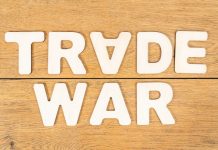Retail sales fell by 0.6% (month-on-month) in July, giving back some of June’s hefty gain. This left sales 4% below the March level, but 7.3% above its pre-pandemic (February 2020) level.
July’s decline was much smaller than Statistics Canada’s preliminary estimate of a 1.7% drop. Looking ahead, the agency’s flash estimate calls for nice bounce back in August, with sales projected to increase by 2.1%.
Regionally, sales were down in eight of 10 Provinces in July, with only Ontario (+0.9%) and New Brunswick (+0.2%) posting modest gains. Other provinces saw sizeable declines, ranging from -3.3% in Nova Scotia to -1.1% in Quebec.
Sales of motor vehicle & parts edged up only slightly (+0.4%) as semiconductor shortages continued to weigh on vehicle availability. Higher prices and improving mobility trends drove sales of gasoline higher in both nominal (+1.4%) and volume terms (+0.3%).
Core sales, which exclude the two above-mentioned categories, declined more than the headline (-1.3%).
- With activity in the housing market cooling off, consumers have redirected their spending away from home improvements. Sales of building materials & garden improvements declined for the fourth month in a row (-7.3%). Sales were also slightly lower at the electronic and appliance stores (-0.3%).
- Ditto for sales at food & beverage stores, which took another step back (-3.4%). Sales at the food & beverage stores declined in five of the last six months, and are now down 3.5% relative to a year ago.
- On the other hand, activity continued to recover in some of the categories most impacted by earlier restrictions. Sales were higher at clothing (+7.6%) and furniture (+2.6%) stores. Notably, sales of clothing and accessories now have recovered to the their pre-pandemic level.
As consumer continued to return to the brick-and-mortar locations, e-commerce sales fell by a whopping 19.5% (seasonally adjusted), marking the largest of the four consecutive monthly declines. This left online sales down 2.9% relative to the year ago but still up significantly compared to pre-pandemic times.
Key Implications
Retail activity gave up some of its strength in July following a brisk increase upon reopening in June. A lot of weakness in July came from lower sales at food and beverage stores, which account for a sizeable 20% of retail sales. In addition, other categories, which saw strong gains earlier in the pandemic, such as online sales, have been easing as well.
Consumers are shifting their spending patterns away from goods and toward services such as dining out, recreation, and travel. Indeed, sales in food services and drinking places rose 11% in July.
Spending on services still has a long way to full recovery, but this process is likely to be slowed by the fourth wave. Most provinces have paused reopening their economies, and many have instituted vaccine passports to help avoid painful business closures. Alberta and Saskatchewan are likely to face the biggest tests in the months ahead due to lower vaccination rates and the steepest rise in cases and hospitalizations. That said, colder fall and winter months might bring renewed health worries for consumers and headwinds for businesses from coast-to-coast.













